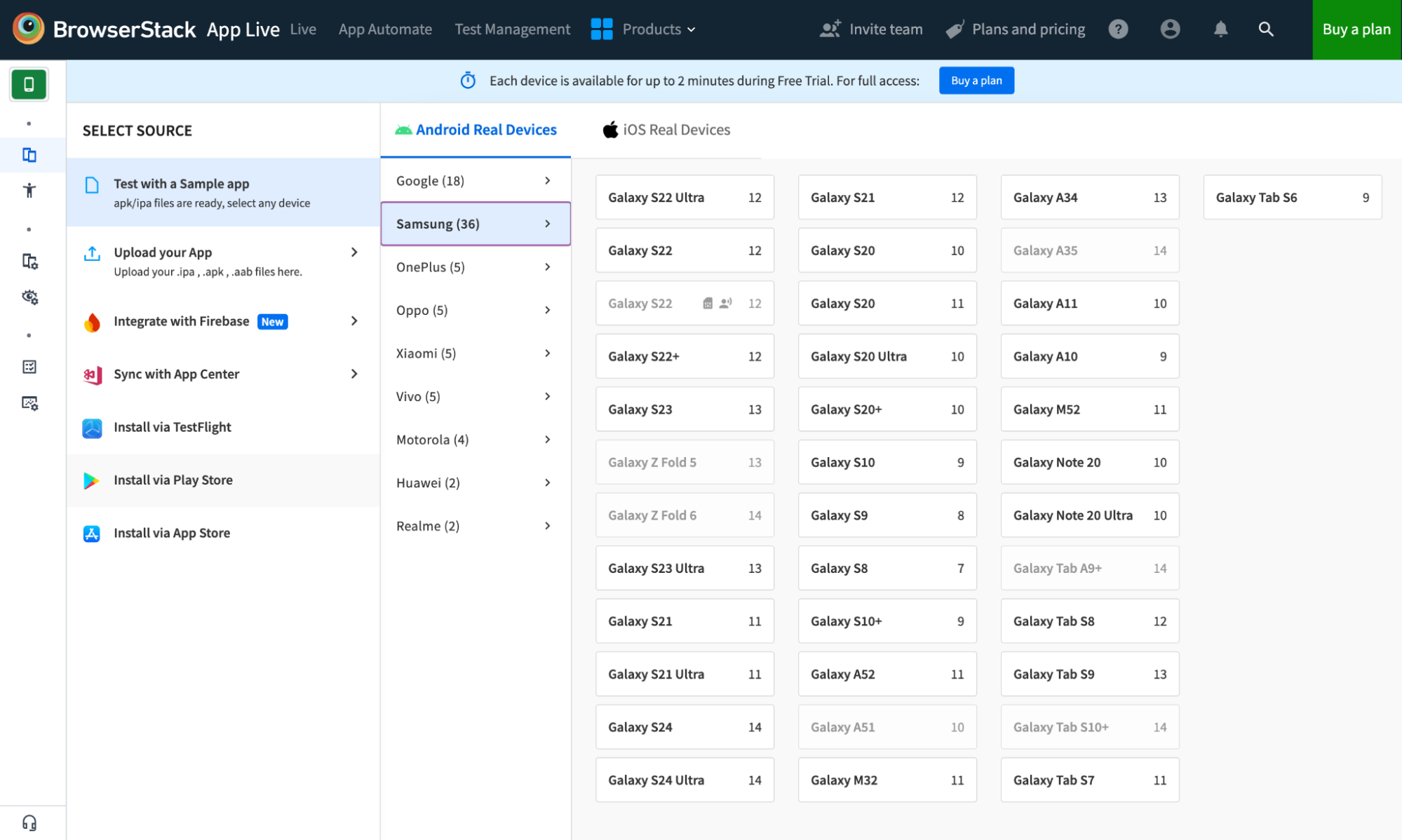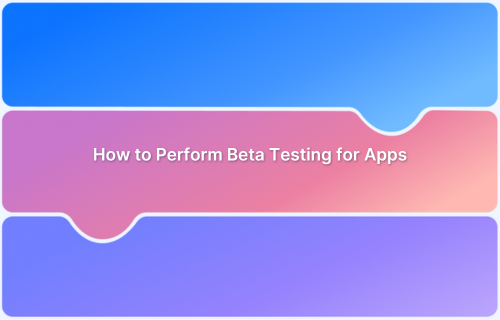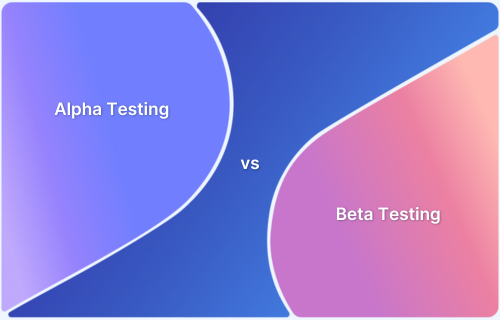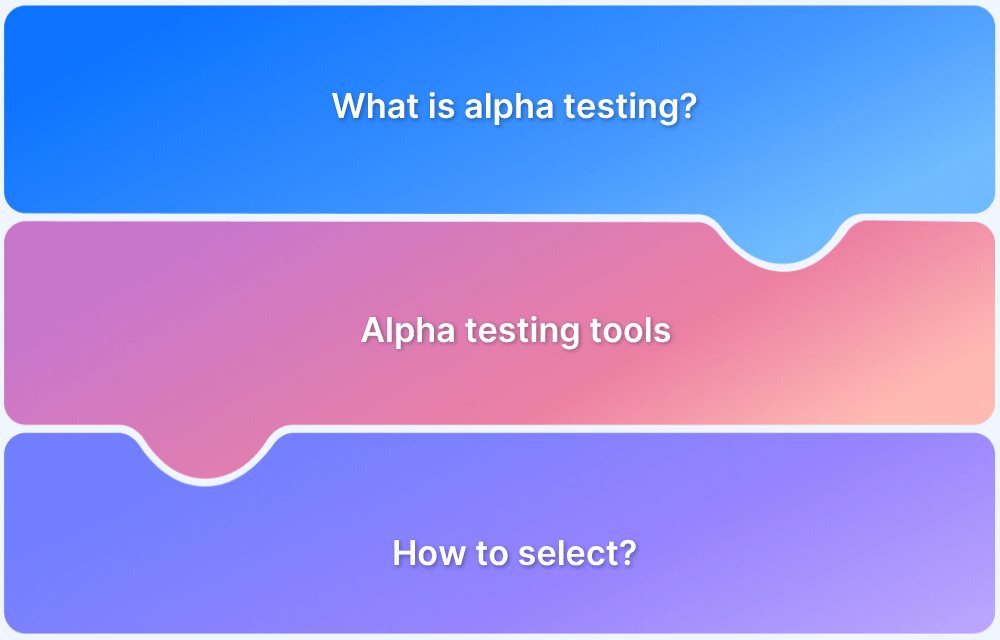Mobile App Beta Testing
By Vivek Mannotra, Community Contributor - December 24, 2024
Mobile app beta testing bridges the gap between initial development and a successful launch. It allows developers to refine their apps by gathering real-world feedback from early users and ensures better functionality, usability, and overall performance.
This blog explores the importance of beta testing, its advantages and challenges, and best practices to help you make the most of this essential process.
- What is Beta Testing?
- What is Mobile App Beta Testing?
- Why is Mobile App Beta Testing Important?
- What is evaluated in Mobile app Beta testing?
- Difference between Alpha and Beta Testing
- Types of Mobile App Beta Testing
- 1. Open Beta Testing
- 2. Closed Beta Testing
- 3. Technical Beta Testing
- 4. Focused Beta Testing
- 5. Marketing Beta Testing
What is Beta Testing?
Beta testing is the phase of software testing where a nearly complete version of an application is released to a select group of external users, known as beta testers. The purpose of beta testing is to identify and resolve any remaining bugs, usability issues, or performance problems that may not have been detected during internal testing.
It provides real-world feedback from actual users operating the app in diverse environments and conditions, helping developers ensure the product is reliable, user-friendly, and market-ready before the official launch. Beta testing is typically the final testing phase before an app’s public release.
Read More: How to perform Beta Testing for Applications
What is Mobile App Beta Testing?
Mobile app beta testing is the process of releasing a near-final version of a mobile application to a select group of external users for testing in real-world environments. This phase allows developers to gather valuable feedback on the app’s functionality, performance, usability, and compatibility across various devices, operating systems, and network conditions.
Mobile app testing involves stages designed to ensure an application’s functionality, usability, and reliability before it is officially released.
Each stage serves a specific purpose within the SDLC, collectively contributing to a robust, user-ready product.
Why is Mobile App Beta Testing Important?
Mobile app beta testing is important because it bridges the gap between development and launch, ensuring the app delivers a seamless and reliable user experience. Key reasons why beta testing is crucial include:
- Identifying Bugs and Issues: It uncovers bugs, crashes, or performance problems in real-world scenarios that may not appear during internal testing.
- Ensuring Compatibility: Tests the app across different devices, operating systems, and configurations to ensure broad compatibility.
- Improving User Experience: Collects feedback on usability, design, and navigation to refine the app for end users.
- Building User Trust: Early testers provide insights that help developers fine-tune the app, increasing the likelihood of positive reviews upon launch.
- Cost-Effectiveness: Detecting and addressing issues during beta testing is less expensive than dealing with them post-launch.
- Validating Features: Confirms that features work as intended and meet user expectations.
- Market Readiness: Helps developers understand the app’s readiness for public release and make necessary adjustments.
Read More: A Detailed Guide on iOS App Beta Testing
What is evaluated in Mobile app Beta testing?
Mobile app beta testing can involve work on several aspects like:
- App performance in a black-boxed runtime environment where the user is free from any considerations about the inner workings at the level of code or system design.
- App features to get perspective from a fresh observer’s eyes, ensuring that the usability or desiredness of each feature can be assessed fairly.
- Evaluating business models with feedback from a set of real users who can test business-critical features for operational purposes.
- Check for proper localization by evaluating the app’s adaptability to location, language, and cultural preferences.
- Evaluate security by checking for vulnerabilities in user experience, authentication workflows etc.
Difference between Alpha and Beta Testing
Here is a table of comparison between Alpha and Beta Testing:
| Aspect | Alpha Testing | Beta Testing |
|---|---|---|
| Definition | Conducted internally by developers and QA teams to test core functionality and identify major bugs. | Conducted by real users in a controlled external environment to gather feedback on usability and performance. |
| Environment | Simulated or controlled environment (for example, lab settings). | Real-world environment with diverse devices, networks, and conditions. |
| Testers | Internal team members, such as developers, designers, and QA professionals. | Selected external users or customers representing the target audience. |
| Purpose | Validate functionality, detect critical issues, and ensure the app is stable for external testing. | Validate usability, gather feedback, and identify bugs missed during earlier testing stages. |
| Scope | Controlled scope, focused on specific features or functionalities. | Broader scope, covering end-to-end app usage scenarios. |
| Type of Testing | Unit testing, functional testing, integration testing, and initial usability checks. | Usability testing, performance testing, and compatibility testing. |
| Feedback | Technical, detailed, and focused on identifying development flaws. | User-centric, focusing on experience, usability, business and performance. |
| Risk | Low exposure; app is not released to the public. | Moderate risk; bugs encountered may affect perception among beta testers. |
| Outcome | Fixes to major technical issues and preparation for external testing. | Refinements based on user feedback and validation for public release. |
| Duration | Shorter duration, often tied to internal development timelines. | Longer duration, allowing sufficient time for users to test and provide feedback. |
| Examples of Activities | Debugging errors in new features, testing app integrations, and simulating user workflows. | Evaluating app performance on different devices, reporting usability concerns, and testing under variable network conditions. |
| Timing | Conducted before beta testing. | Conducted after alpha testing but before the official release. |
Read More: Alpha Testing vs Beta Testing
Types of Mobile App Beta Testing
There are many possible types of Beta testing, mainly stemming from the final intent of the application developing agency in wor, but for a general overview, here’s a breakdown of the key types of beta testing, their purpose, and how they differ:
1. Open Beta Testing
The app is made available to a wide audience, allowing anyone interested to test the app and provide feedback.
Purpose
- Gather diverse feedback from a broad user base.
- Identify bugs across a variety of devices, operating systems, and user scenarios.
Advantages
- Relatively Large-scale testing provides comprehensive insights into performance and usability.
- Creates early buzz for the app and engages the target audience.
Challenges
- Risk of exposing an unfinished product to competitors or negative public perception.
- Feedback can be overwhelming and less structured due to the larger participant pool.
Example: Gaming apps often use open beta testing to stress-test their servers and refine gameplay before launch.
2. Closed Beta Testing
Testing is restricted to a specific group of users, often by invitation or application.
Purpose: Focuses on controlled feedback from selected testers who meet specific criteria (for example, expertise, demographics).
Advantages
- Feedback is more targeted and actionable.
- Reduces the risk of leaking sensitive or incomplete features to the public.
Challenges
- Limited user base may not catch all potential issues.
- Can lack the diversity of real-world scenarios tested in open beta testing.
Example: Productivity apps might invite industry professionals for closed beta testing to ensure feature alignment with real-world needs.
Read More: 20 Types of Tests every developer should run
3. Technical Beta Testing
Primarily involves testers with technical expertise, such as engineers, corporate, or QA professionals.
Purpose: Identify and fix technical issues, such as bugs, crashes, or compatibility problems.
Advantages
- Ensures the app meets technical standards and is stable for broader use.
- Focuses on backend functionality, system integrations, and performance under different conditions.
Challenges
- Limited focus on user experience and usability.
- Requires testers with a high degree of technical knowledge.
Example: B2B apps with SDK or CLI products may use technical beta testing to ensure seamless server integration and data security.
4. Focused Beta Testing
Targets a specific segment of users or focuses on particular features of the app.
Purpose: Evaluate specific functionalities or user workflows within a defined context.
Advantages
- Highly concentrated feedback helps refine critical aspects of the app.
- Efficient use of resources by targeting areas of greatest concern.
Challenges: Limited scope may overlook broader usability or performance issues.
Example: E-commerce apps might test only the checkout process with a small group of users to ensure its reliability and simplicity.
5. Marketing Beta Testing
Combines testing with promotional efforts, involving influencers or early adopters to generate interest in the app.
Purpose: Build excitement and awareness about the app pre-launch while collecting feedback.
Advantages
- Dual benefits of refining the app and increasing visibility.
- Encourages early adoption and word-of-mouth promotion.
Challenges
- Focusing on marketing can sometimes overshadow the identification of usability issues.
- Requires careful coordination to balance user expectations and app readiness.
Example: A fitness app might partner with fitness influencers to both test the app and promote its unique features.
Read More: Strategies for effective Mobile App Testing
When should you perform Mobile App Beta Testing?
Mobile app beta testing makes the most sense for mobile app developers in a business or enterprise context during these phases:
- Before the Official Release: The need to validate a business-critical flow in a real user environment makes a lot of sense for a business expecting revenues.
- For Updated Versions: The availability of resources for this kind of activity is usually found in such settings. Understanding the need for feedback at this level is rare, and enterprises or startups are geared towards this kind of behavior.
- After Update Release: Opportunity and leverage maximization for getting a competitive edge in the highly dynamic technology market.
- After Bug Reports: Enhance reliability and user trust with insight into behavioral patterns before a full release provides a great way for businesses to get ahead.
Best Practices for App Beta Testing?
To maximize the effectiveness of your beta testing phase, it’s essential to follow proven strategies. These practices help streamline the process, gather valuable feedback, and ensure your app is ready for a successful launch.
- Properly evaluate your needs before engaging in beta testing, as it is a time and resource-intensive activity.
- Keep the tester group manageable but representative of your target audience.
- Clearly define objectives and expected tester tasks, ensuring that each interaction is useful.
- Use surveys or structured feedback forms to streamline insights into a cohesive user story for each session.
- Incentivize participation to encourage thorough testing with discounts, coupons, referral bonuses etc.
Read More: 10 Best Alpha Testing Tools
Advantages of Mobile App Beta Testing
Beta testing offers numerous benefits that can significantly improve your app’s performance, user satisfaction, and market readiness. Understanding these advantages can help you leverage the beta phase effectively.
- Detects bugs in real-world scenarios and a chance to fix them beforehand.
- Offers insights into user experience and satisfaction for various user experience channels and scenarios.
- Provides marketing and user engagement opportunities by involving users in the product’s development.
- Help with the design of new features with an understanding of how real users are using the app.
- Identify and fix potential performance bottlenecks.
- A chance to identify and fix security vulnerabilities.
Disadvantages of Mobile App Beta Testing
While beta testing is valuable, it also comes with potential drawbacks. Being aware of these challenges allows you to mitigate risks and plan for a smoother testing experience.
- Having too many stages of testing can unnecessarily complicate the QA pipeline.
- Selecting and approaching testers can be a cumbersome exercise.
- Testers may not provide consistent or detailed feedback.
- Co-ordinating feedback analysis can be puzzling.
- There’s a potential risk if an unstable app affects users’ perception of the brand
Why should you perform App Beta Testing on Real Devices?
By definition, this is a pre-release activity so you should ensure you are testing with users who are using the most representative set of devices for the app’s final target environment.
For Android, this could mean narrowing the selection down to the most appropriate manufacturer-model/version combination. For iPhone, you should consider the latest iOS version that supports the application you are trying to run.
BrowserStack App Live is an online service that lets you install and access APKs on real mobile devices running Android and access them through a web browser. It also offers the latest variants and OS versions for iPhones from Apple. You can create an IPA and test it on a real iPhones without having to spend on actual devices.
With BrowserStack App Live, you can:
- Manually test mobile apps on 3500+ real smartphone devices
- Use real device features like SIM, biometric auth, dark mode, natural gestures, SMS, etc.
- Localize the session to your target
- Test mobile app’s frontend performance
With BrowserStack App Automate, you can:
- Automate testing of mobile apps on 3500+ real smartphone devices and configurations.
- Integrate seamlessly with popular testing frameworks like Appium, Espresso, and XCUITest.
- Debug with logs, screenshots, and video recordings for every test session.
- Run parallel tests to speed up execution and ensure faster releases.
Conclusion
Mobile app beta testing is a new way to manage and control quality in environments where business success and functional optimization through QA are top priorities.
There are many approaches to beta testing, and it can be managed at different levels of width and depth.
BrowserStack App Live and App Automate are great for performing mobile App Beta Testing because their cloud service allows you to access a wide range of real devices. They also enable smooth parallel tests ensuring quicker releases.
BrowserStack lets you automate, record, and share test sessions for further analysis. Along with test management and reporting, you get a comprehensive product that increases your chances of success with your beta testing effort.





